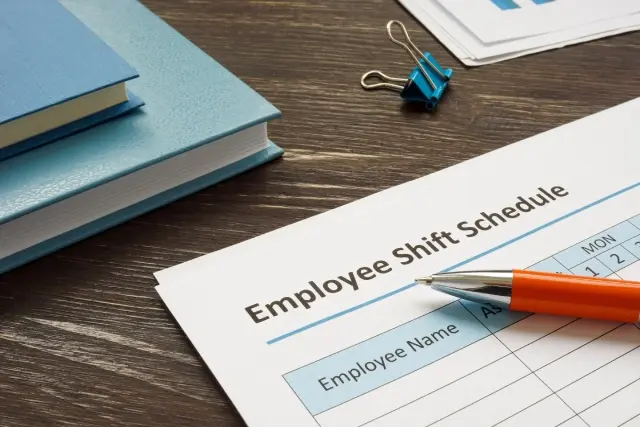Deskless workers often hop from company to company. But more and more organizations are realizing that prioritizing employee recognition could be the key to retaining workers.
Employers want to make committed employees happy to reduce turnover, avoid knowledge loss, and manage recruitment spending. Something as small as saying thank you can have a profound impact. So, how do you ensure you’re doing all you can to make your workers feel appreciated and recognized?
Why recognition is important in 2023
Before we dive into some of the strategies your business can use to improve recognition, let's talk about why it's vital in the first place.
Recognition connects workers to their jobs
First, it's essential to realize how impactful a recognition strategy can be for companies.
At Nectar, we recently surveyed 800 full-time employees to gather employee recognition statistics. The results from this survey highlighted the impact that recognition has on employees:
- 81.25% of employees feel valued by their employer
- 83.6% of employees feel that recognition affects their motivation to succeed at work
- 77.9% of employees would be more productive if recognized more frequently
- 81.9% of employees agree that praise for their contributions improves their engagement
Retention reduces turnover
Companies continue to deal with staffing issues. Many organizations are trying to find ways to reduce employee turnover, and they’re trying things like:
- Gathering and acting on employee feedback
- Offering the right benefits and wages
- Removing toxic managers and employees
- Working on building a stronger company culture
- Improving workforce engagement
Thankfully, recognition helps you advance a lot of your retention goals.
Do deskless employees feel valued in 2023?
Our survey reached several industries, including sectors that typically employ deskless workers like retail, hospitality, manufacturing, and healthcare.
|
Industry |
Number of respondents |
Feel valued by employer |
Would be more productive if recognized more |
Agree that recognition for their contributions improves engagement |
|
Retail |
53 |
73.58% |
79.25% |
83.02% |
|
Hotel/Food service |
54 |
77.78% |
75.93% |
70.38% |
|
Manufacturing |
64 |
81.25% |
82.81% |
76.56% |
|
Health care/Social assistance |
91 |
82.42% |
73.63% |
80.22% |
|
Total average |
262 |
78.76% |
77.91% |
77.54% |
By far, retail workers feel the least valued by their employers, with only ~3 in 4 feeling valued. Conversely, healthcare and social assistance workers feel the most valued by companies. Unfortunately, there is still a lot of work to be done. Only one of the groups we highlighted felt more valued than the survey average.
Most of the employees surveyed would be more productive if recognized more frequently. The frequency of recognition impacts manufacturing workers the most, while healthcare workers are less impressed.
Last, retail workers strongly feel that recognition for their contributions improves their employee engagement, while hotel/food service workers aren't as pulled by praise for their work.
Overall, this paints a clear picture: more recognition could lead to better outcomes for most deskless workers.
7 tips for improving recognition for deskless workers
So, now that you understand why you need to invest in recognizing your workers, how do you make it a reality? Here are some strategies your company can use (no matter your team size.)
1. Rethink your beliefs about how often you should recognize employees
Have you ever heard the phrase: “Won’t giving out more recognition make our team members value it less?”
While providing more recognition can feel like spoiling your employees, the data doesn’t support that.
Our same employee recognition statistics survey found that employees felt more valued by their employer when they received recognition more frequently.
While 94.4% of employees felt valued when receiving weekly praise, only 68.2% felt valued when receiving quarterly recognition. When employees received recognition yearly, the outcomes were much worse because only 37.2% of employees felt valued in that scenario.
If you are depriving your team of frequent praise, consider what providing it more often could do for your bottom line.
2. Define goals for your recognition program
Before investing in appreciation, it's essential to understand and define your goals. Once you understand your goals, you can track the right metrics and create a program that helps you meet your intended results.
Here are a few examples of the goals you might have:
- Improve retention at the organization
- Spot potential workplace leaders for deeper mentorship
- Encourage employees in between yearly review cycles
- Build camaraderie in the workplace.
3. Train your people managers
Managers are one of your best assets when it comes to giving recognition.
47% of deskless workers surveyed value recognition from managers over praise from peers. If you want to improve the impact of your recognition program, managers need to understand how to give timely and specific feedback. Training managers on how to make time for recognition, what a good worker shoutout looks like, and how to understand their worker's praise preferences are key.
4. Encourage peers to get involved
Another way to increase praise at work is by getting peers involved.
Colleagues are often able to see things that managers and executives don't. For example, they know when a colleague went above and beyond to serve a customer or help a coworker by picking up a shift.
Peers often highlight the type of praise that leaders want to see. How do workers act when managers aren't around to see them?
But, getting peers involved takes effort. Some workers might be afraid to recognize each other, especially if you have created an environment based on heavy competition for scarce company resources.
Workers also value recognition from peers, but you have to set them up for success before implementing a peer recognition program.
- Make sure workers know you value their input
- Show each team member how to send a good shoutout (get managers involved if you need to)
- Give team members time during the shift to recognize each other
5. Lead by example
Praise isn’t a one-and-done experience. It needs to be something you continually push and promote. If company leaders aren’t actively giving out recognition, eventually others will stop too.
Company leaders and executives should focus on creating a recognition habit. Solicit shoutouts from your general managers that you share with the entire company on a monthly basis. If you’re able to give praise in person, do it. Even five minutes to walk the building and say thank you to employees can make a huge difference.
The goal is to ensure that praise is woven into the fabric of your organization. You don't want it to be a last-minute afterthought to pull out when engagement is down. Instead, you want it to happen as often as possible.
6. Tie recognition to tangible gifts and prizes
Once a worker receives recognition, what can they do with it? Giving workers access to fun prizes like gift cards, company swag, and experiences can take praise to the next level.
There are many ways that you can tie recognition to tangible gifts.
Some companies do something manually, like giving out recognition cards that can be accumulated and turned in for fun prizes. While manual processes can work, it can be challenging for employees to keep track of these physical cards. Most of all, it's difficult for companies to budget for these rewards and track where cards go. Could you end up rewarding the wrong employee because they happened to pick up a lost card?
Many companies are turning to employee recognition tools to make the process easier to manage and more cost-effective.
7. Invest in an employee recognition software
After you've invested energy in workplace praise, it often makes sense to transition to employee recognition software. Technology can help you streamline the process across your organization, effectively budget reward spending, and help your workers feel valued at work.
Here are a couple of must-haves for picking the right employee recognition platform.
1. Ease of use
How much training will workers need to use the tool effectively? Will administrators spend hours learning how to use your chosen platform? The platform you pick should be straightforward. Tools like Nectar will likely resemble the social media feeds most workers use today.
2. Mobile app access
Many deskless workers don't have access to a company computer, but most have a mobile phone. Therefore, you must ensure that any company you consider has a platform that can be accessed via a mobile phone browser or application.
3. Email address flexibility
In your business, managers and leaders may be the only people who have official email addresses, but you need everyone to have access to a recognition tool. Look for programs that give you flexibility on which emails go into the platform. For example, can you use Gmail and Yahoo addresses, or do they need to be company branded?
4. Integrations
You want a platform that can sync with your HRIS platform, so you have one source of truth for the worker in your company. Tools like Nectar sync with most HRIS platforms and give you peace of mind when employees are hired, fired, or move departments.
5. Analytics
Last, you need a tool that can give you basic analytics to strengthen your employee recognition process. Recognition can be improved, but keeping up with the shoutouts shared across your organization is often challenging. When you use a recognition tool, you'll be able to understand precisely where praise is flowing in your organization.
For example: If recognition is tracked, you can look at how individual managers are doing with praise. You can then see how productive those teams are based on other analytics you have access to.
Conclusion
As you move to increase retention and improve employee engagement, recognition often comes up. Deskless workers deserve praise for the work they do every day. From frontline healthcare workers to retail employees stocking shelves, our lives would be very different without these employees.
Thankfully investing in the retention of these workers doesn't cost as much as we think.
If you are new to this experience, you can start by simply writing thank you notes or providing the occasional gift card to employees while they’re working. Once you’re ready, you can take praise to the next level by investing in software that helps you streamline the process and give employees a wider variety of rewards.
No matter where you are on your journey, your team will appreciate your focus on improving engagement and retention.





